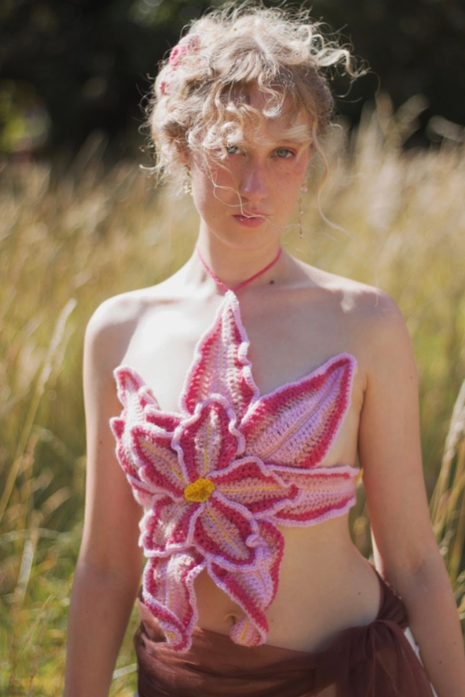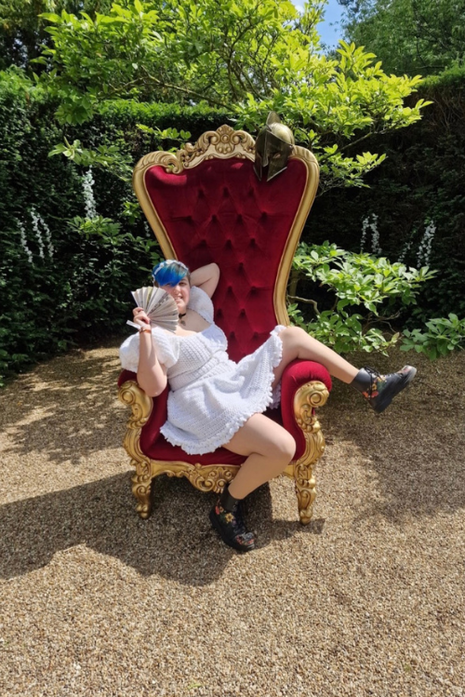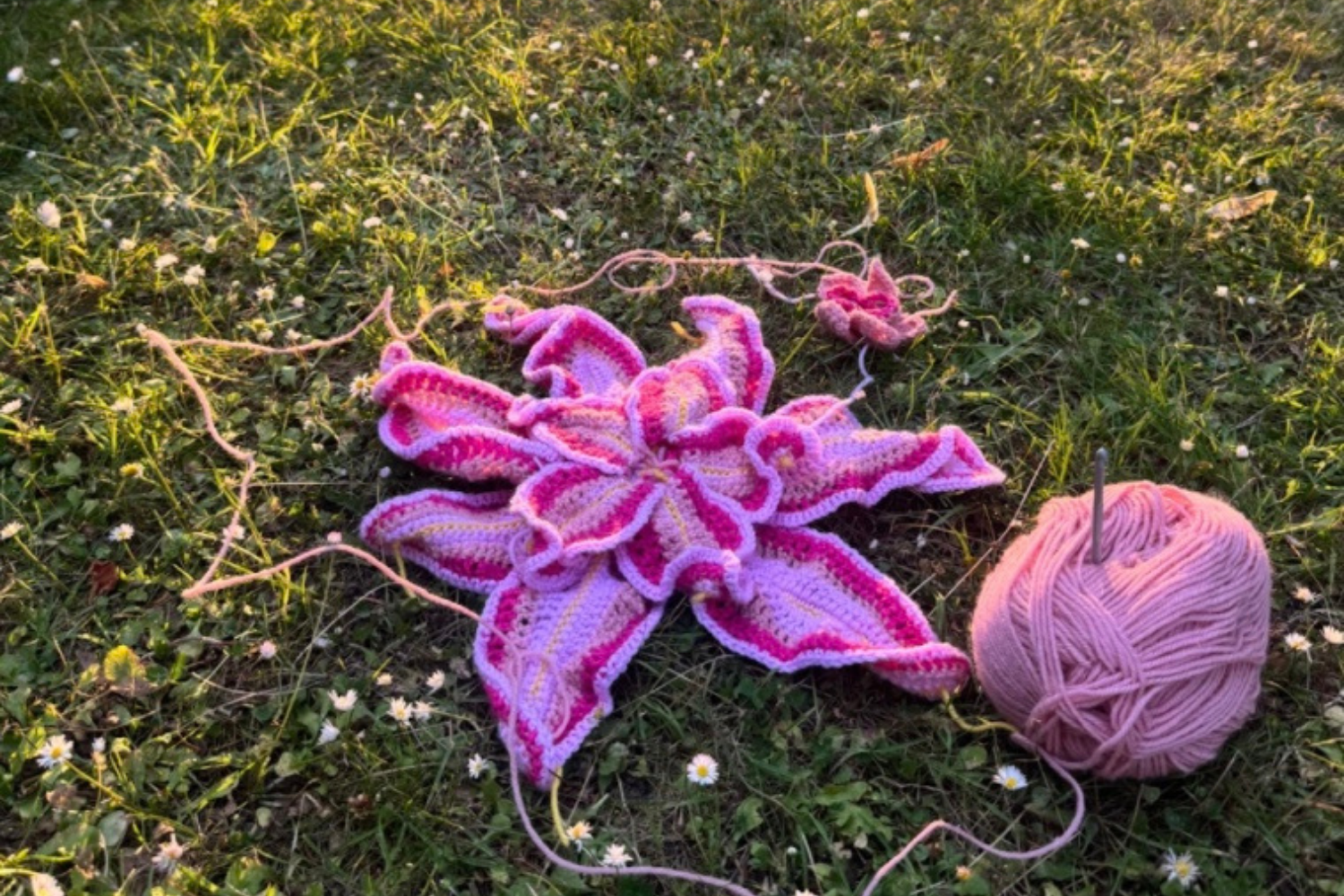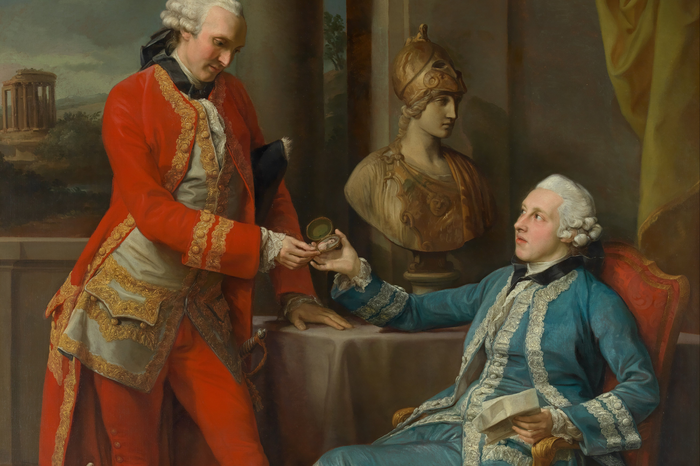Finding clothes off the rack that perfectly fit my body is a rare, if not almost magical, occasion. So when I found a pair of jeans that hugged my waist, cupped my bum perfectly, didn’t chafe my thighs or give me a little ‘jeanis’ whenever I sat down, I wore them like a second skin. My magic jeans became an everyday staple – my galavanting, cartwheeling, and rolling-around trousers. But magic, as it turns out, is often fleeting. After years of wear and love, my beloved magic jeans split rather dramatically down the crotch. An unmissable, gaping, somewhat inappropriate wound. I was devastated. Not only had I damaged the only pair of jeans that flattered me, but I definitely did not have the money to repurchase them at the premium price I had originally paid.
I mourned the loss publicly, sighing with a long face and heavy heart to friends about how I had no choice but to throw my magic jeans away. “Can’t you just sew them up?” they asked.
The thought had crossed my mind but I did not trust myself to not haphazardly further disfigure them. In my head, sewing was a technical, slightly arcane art, one for nimble-fingered grandmothers. I had also checked the day rates of local seamstresses, and the small fortune they charged for a rather tiny job further solidified this notion that mending was no easy task.
“It struck me how much knowledge is passed down, not through formal teaching, but through intimate spaces where skills are transferred between generations”
Holly Jewitt Maurice of Newnham College kindly and expertly offered to mend my jeans. They were returned to me a few days later, gaping hole gone, magic jeans reincarnated. But I was curious: how did she become so adept at mending?
“It was my gran who taught me the basics of sewing, knitting, and using a sewing machine when I was younger,” she explained. “She’s always been the sort of person to say ‘don’t throw that away, I’ll fix it for you’. She likes to sew little patterns into things or a little flower to cover up a big hole. It’s a good skill to have.”
It struck me how much knowledge is passed down, not through formal teaching, but through intimate spaces where skills are transferred between generations. “She not only wanted to teach me a useful skill but wanted to bond with me as well. She grew up during World War II which was a time of rations and making do, so she still thinks it’s valuable to know how to do things for yourself.”
I asked if learning this skill had helped her in her everyday life.
“Yes! It means that if I break something, it’s a really easy five-minute fix. So it wouldn’t really hold me up if I wanted to go out and something rips. It also helps battle overconsumption because I can alter clothes to my style and repair damages.”

This prompted me to ask Holly about larger projects, like making your own clothes.
“That’s something I want to get better at. Making my own clothes is more about crocheting, which I taught myself. My first project was a little white top that I made entirely with a single crochet stitch and wore to a concert. I’m currently working on a top for Newnham Garden Party as well. I found a double-layer lily top on Pinterest and thought it was amazing. I looked up the original creator on Instagram, and the top was so expensive so I wondered if I could make it myself. The creator posted a partial pattern, so I pieced together how to make it and freestyled the rest. I really enjoyed making it. Plus, you get something unique that no one else has.
When I asked Holly what advice she had for people starting out with sewing, knitting or crocheting, she praised video tutorials. “YouTube is great! Someone showing you what to do is much easier than written instructions.”
Speaking to ’86 Cambridge grad, Sarah, she reminisced about her dress-making days: “We were taught to use sewing machines at school. My mum bought me simple dress patterns from Debenhams … and a sewing machine which I took to university. I made quite a few summer dresses with fabric that I’d bought from the market. A college friend was also into sewing at the time so we shared patterns and ideas. I found a nice pattern for an off the shoulder cocktail dress. I made several dresses to that pattern and similar patterns … and I wore them to at least one May Ball, if not several. I liked using ‘shot’ satin fabric that shone in two different colours depending on the light.
“It’s a great skill to have as making your own clothes is really satisfying and saves money too. There are so many patterns and fabric types and colours to explore that it can be incredibly exciting to select your next project and then wear the finished product.”
“There is something radically hopeful about choosing to restore rather than throw away”
Current Newnhamite Kestrel Zakharov has also historically made their own May Week outfits, prompting me to enquire about what sparked this hobby.
“I learned to crochet … knit and sew … after realising the clothes that I liked never really fit my body type. Clothes never had pockets, never accommodated for the fact that I’m curvy, and only really fit if I was binding to unhealthy levels, and when they did fit, they felt unflattering. Making my own clothes allows me to make adjustments and removes that sort of limitation, as well as saving me the efforts of making alterations that work.

“The projects I’m most proud of are the two dresses that I’ve managed to complete. They took a monumental amount of time and patience.”
I finally asked why Kez felt that this was an important skill to have.
“Textiles is an important skill to have – not only does it allow you to appreciate all the work that goes into every piece, it also allows you to alter clothing to fit what you need. For instance, adding pockets, or making it fit unconventional body types. It also allows you to make wearable art.”
After speaking with these extraordinarily creative students, I felt both admiration and frustration. Admiration for their patience and skill but frustration that I, like many others, had come to believe that mending was somehow beyond me. That instead of reaching for a needle and thread, my instinct was to discard and replace. We live in a culture that treats repair as unusual and obsolescence as normal. But there is something radically hopeful about choosing to restore rather than throw away. Something gentle and subversive in holding on.
Knowing how to not only do basic mending and altering for yourself but developing creative, practical skills is important. The freedom to add authenticity to mass produced clothing and even create clothes that not only meet aesthetic needs but fit our bodies is exciting.
Thanks to Holly and her gran, my magic jeans are back in rotation. And now, I’m learning to thread my own needle. Slowly, clumsily – but with hope.


